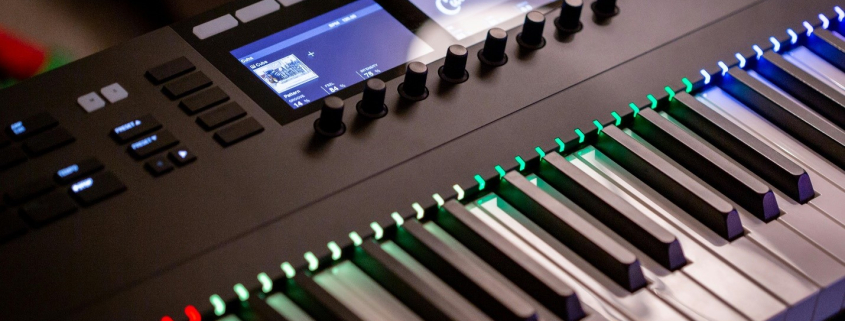Mixing music is often considered the alchemy of sound. It’s the process where individual audio tracks are combined, refined, and polished to create a cohesive and impactful listening experience. In the rich tapestry of New Zealand’s diverse music scene, understanding the secrets behind successful music mixing can be a game-changer for aspiring artists and producers alike.
Understanding the Basics of Mixing
What Is Mixing?
Mixing involves balancing individual tracks, adjusting levels, applying effects, and ultimately crafting a sonic landscape that captures the essence of the music. It’s the bridge between the raw recordings and the final product that listeners will enjoy.
The Role of the Mixer
As a sound mixer, your job is to serve the song. This means not only enhancing individual elements but also ensuring they work together harmoniously. Think of yourself as a painter: each track is a different color, and your goal is to create a masterpiece that looks balanced and appealing and in music terms, resonates with listeners.
Essential Tools for Mixing
Digital Audio Workstations (DAWs)
Your choice of DAW is foundational to your mixing process. Popular options like Ableton Live, Logic Pro, and Pro Tools each have their unique strengths. For many New Zealand producers, understanding the ins and outs of these platforms can significantly enhance your mixing skills. At DJ Ash- S Mix Master studio, the DAW of choice is the latest version of Ablton Live.
Audio Interfaces and Monitors
Investing in a quality audio interface and studio monitors is crucial. Your interface acts as a bridge between your computer and the audio world, affecting sound quality significantly. Studio specific monitors will provide a flat frequency response, allowing you to hear your mix accurately. Remember, what you hear is what you mix!
Plugins and Effects
Plugins are the spice of mixing. EQ, compression, reverb, and delay are some of the essential tools in a mix engineer’s arsenal. Understanding how to use these effectively can dramatically alter the outcome of your mix. Websites like DJ Ash offer insights into the best plugins for various styles and budgets.
The Mixing Process
Step 1: Preparation
Before you even touch the faders, take time to prepare your session. This involves organizing your tracks, naming them clearly, and color-coding for easy navigation. Create a rough balance of levels, panning, and effects to lay the groundwork for your mix.
Step 2: Setting Levels
Begin by gain staging which means, adjusting the volume levels of each track. Aim for a balanced mix where no single element dominates unless intended. Start with the drums and bass, as they typically form the foundation. Gradually bring in other elements, ensuring they complement the backbone of the mix.
Step 3: Panning
Panning is vital for creating space in your mix. Imagine a stage with a live band. Band members each have their own space on the stage, and they don’t line up in the center one after the other. The same concept applies in a digital realm. While it may be tempting to center everything, spreading elements across the stereo field can add depth. Consider panning percussion slightly left and right to create a more immersive soundscape.
Step 4: EQ and Frequency Management
Equalization (EQ) is one of the most powerful tools at your disposal. Use EQ to carve out space for each instrument. For example, you might cut some low frequencies from guitars to allow the bass to thrive or boost certain mid frequencies in vocals to help them stand out. Proper frequency management ensures clarity and balance.
Step 5: Compression
Compression controls the dynamic range of a track, helping to even out levels and add punch. It’s a subtle art; over-compressing can squash the life out of a mix, while too little can leave it sounding unrefined. Experiment with attack and release settings to find the sweet spot. In most cases 1-2dB of gain reduction offers a desirable effect. However, a vocal may need a little more compression to even out the peaks.
Step 6: Effects
Once you have your levels set and elements balanced, it’s time to add effects. Reverb can create a sense of space, while delay can add depth and interest. Be cautious, though—effects can quickly overwhelm your mix if applied excessively. Use them to enhance, not overshadow. When applying effects, a little goes a long way as if overdone, any undesirable effects will become more prominent later in the mastering process.
Step 7: Finalizing the Mix
Once you feel your mix is coming together, take a step back. Listen critically and seek feedback from trusted peers. It’s essential to listen on different systems (like headphones, car speakers, etc.) to ensure your mix translates well across various platforms. Another way to cross check a finished mix is by using a reference track, ideally in the same genre and key. Using a reference track provides a point of reference for what you would like your track to sound like, in terms of sonic quality and balance.
Common Mixing Mistakes to Avoid
1. Overcrowding the Mix
One of the most frequent pitfalls in mixing is overcrowding. Too many elements competing for attention can muddy your mix. Focus on what’s essential and consider removing unnecessary tracks.
2. Ignoring the Low End
The low end is crucial in music, yet it’s often overlooked. Ensure your bass and kick are well-defined and that they work together. Consider using high-pass filters on non-bass instruments to make room for the low frequencies. Sidechaining the bass to the kick is another way to create definition. Grouping these 2 sounds and applying a gentle high quality glue compressor such as an SSL Glue bus compressor will ensure a balanced and cohesive sound, while sounding warm and analogue.
3. Neglecting Automation
Automation allows you to adjust levels and effects dynamically throughout the track. Utilizing automation can add interest, tension and complexity to your mix, helping to maintain listener engagement.
4. Mixing in Solo
While it’s tempting to mix individual tracks in isolation, always listen in the context of the full mix. Soloing tracks can lead to decisions that don’t translate well when all elements are combined.
The Importance of Reference Tracks
Using reference tracks is an essential practice for any mixer. Choose professionally mixed songs that resonate with the sound you’re aiming to achieve. Comparing your mix to these references can help you identify areas for improvement and ensure you’re on the right track.
Trusting Your Instincts
While technical knowledge is essential, trusting your instincts is equally important. Mixing is an art form, and sometimes, the best decisions come from creative feelings and emotions. Don’t be afraid to experiment and take risks in your mixes.
Continuous Learning and Growth
The world of music mixing is ever-evolving. To stay current, invest time in continuous learning. Follow industry trends, attend workshops, and connect with fellow producers. The New Zealand music community is rich with talent and knowledge—leverage it!
At DJ Ash-S Mixing and mastering academy, you can find a wealth of resources and tutorials, to help sharpen your mixing skills.
Conclusion
Successful music mixing is a blend of science and art. By understanding your tools, developing a solid workflow, and embracing your unique style, you can craft mixes that captivate audiences.
Explore more tips and resources to elevate your mixing game at DJ Ash. In the ever-evolving landscape of New Zealand music, your mix could be the next big thing!


